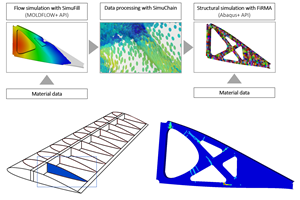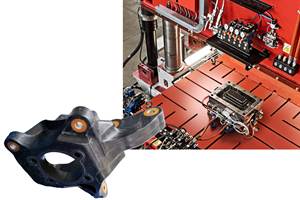Do we need a new definition for SMC?
Side story to SMC: Old dog, more tricks.
Recent changes in and variations on sheet molding compound (SMC) formulations have taken it some distance from its historical beginnings and conventional recipes. Do we then need a new definition for this product? Or will the old one still work with minor modifications? Nomenclature can be a tricky thing in industries where product and process complexity guarantees the use of abbreviations — something certainly true in both the automotive and plastics/composites markets. Add to that the creative marketing of those who wish to uniquely brand their companies’ newest material or process variant, and the industry’s communications are soon awash in interesting terminology that might or might not be meaningful, consistently applied or correctly understood.
Toward a consistent definition, Dr. Klaus Gleich, senior research associate – corporate R&D, Johns Manville (Denver, CO, US), points out, “If you go back to the origins of the term ‘prepreg,’ then all these materials are prepregs. Any preimpregnated fiber-reinforced, semi-finished material is a prepreg. If you take a composite pipe and overmold it, then the pipe is a prepreg. Even GMT [glass-mat thermoplastic composite] is a prepreg.” He adds that practically speaking, and regardless of the type of resin and reinforcement used, the biggest difference between SMC and “true” prepreg is that prepreg is typically stored in a freezer, but SMC is stored and used at ambient temperature.
Steven Hardebeck, technology director North America – composites and John Ilkka, business development manager – advanced materials at Polynt-Reichhold (Durham, NC, US ), however, both contend that products that contain continuous reinforcement (unidirectional or weaves, glass or carbon fiber) are not SMC. “Regardless of the process you use to make it, if it’s continuous fiber, it’s not SMC,” argues Hardebeck. Ilkka adds, “I believe the SAMPE [Society for the Advancement of Materials & Process Engineering] guys would probably agree with us.”
“I don’t know who should take responsibility for this in our industry, but I think there would be great value in coming together around a common language,” comments Terrence O’Donovan, VP – marketing and sales, Core Molding Technologies (Columbus, OH, US) and current chair of the Automotive Composites Alliance (ACA) of theAmerican Composites Manufacturers Assn. (ACMA, Arlington, VA, US). “As an industry, composites is still immature and evolving, it’s still more experimental and novel than commercial and uniform. That’s both good and bad,” he adds.
O’Donovan, who spent the first 20 years of his career in the steel industry, has a unique perspective on the topic. “In the early days, we faced the same thing in the steel industry,” he recalls. “Everyone had their own chemistry, their own unique mix of steels, and they were out promoting them as something unique and different.” Eventually, the industry came together around the need for standardization through the American Iron & Steel Institute (Washington, DC, US). “We definitely don’t want to take away the tailorability of fiber, resin and processing,” he notes, “but if we want to be accepted and we want our customers to have confidence we’re all talking about the same thing, we’re going to have to come together as an industry.”
Related Content
Improving carbon fiber SMC simulation for aerospace parts
Simutence and Engenuity demonstrate a virtual process chain enabling evaluation of process-induced fiber orientations for improved structural simulation and failure load prediction of a composite wing rib.
Read MorePrice, performance, protection: EV battery enclosures, Part 1
Composite technologies are growing in use as suppliers continue efforts to meet more demanding requirements for EV battery enclosures.
Read MoreWAG Wernli to produce composite brackets for Dufour Aero2 drone
The Swiss company was chosen for its C-SMC expertise, which will replace original aluminum brackets to enhance weight savings, corrosion resistance and adhesive bonding capabilities.
Read MoreA digital twin to validate SMC performance in suspension structures
High-fidelity, anisotropic behavior material card, integrated with process simulation, structural FEA and validated with CT and physical tests enables optimization proven in award-winning SMC suspension knuckle.
Read MoreRead Next
CW’s 2024 Top Shops survey offers new approach to benchmarking
Respondents that complete the survey by April 30, 2024, have the chance to be recognized as an honoree.
Read MoreComposites end markets: Energy (2024)
Composites are used widely in oil/gas, wind and other renewable energy applications. Despite market challenges, growth potential and innovation for composites continue.
Read MoreFrom the CW Archives: The tale of the thermoplastic cryotank
In 2006, guest columnist Bob Hartunian related the story of his efforts two decades prior, while at McDonnell Douglas, to develop a thermoplastic composite crytank for hydrogen storage. He learned a lot of lessons.
Read More














.jpg;maxWidth=300;quality=90)











